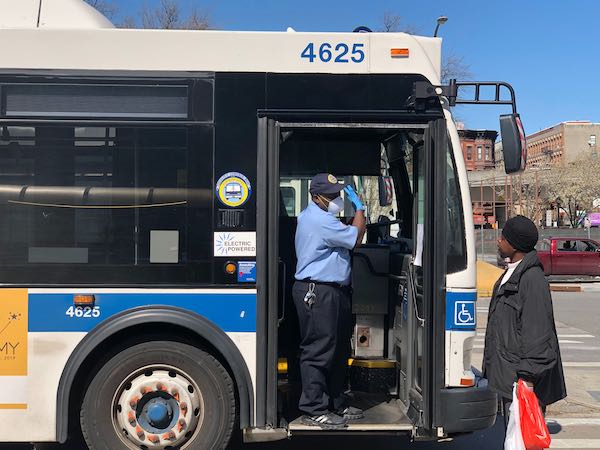These talks are part of the TransitCenter’s “Transit and COVID-19: The Online Event Series”
Video recording of Transit on the Frontline Part 1: An Interview with Todd Brogan
Video recording of Transit on the Frontline Part 2: An Interview with Brian Sherlock
How can we protect transit workers on the frontlines of the COVID-19 pandemic?
Transit workers are on the frontlines of the response to the COVID-19 pandemic. Bus and train operators, maintenance workers, crews disinfecting vehicles, and the entire transit workforce are bravely moving millions of essential workers in the United States.
And yet much of the transit workforce is being asked to do its job without the protections needed to keep them safe. Personal protective equipment is scarce, access to restrooms and hand-washing facilities is negligible, and paid sick leave is limited.
While many transit agencies have implemented measures like rear-door boarding and suspending fare collection, a much more comprehensive approach is needed. The stakes couldn’t be higher – transit workers shouldn’t be forced to risk illness and death on the job. And without a healthy workforce, agencies won’t be able to continue running the service that millions of Americans are depending on to reach their jobs at hospitals, grocery stores, and other essential workplaces that keep cities functioning.
On Friday, April 10th, join TransitCenter’s Stephanie Lotshaw and Todd Brogan, Director of Field Mobilization at ATU International, for an in-depth conversation about how transit agencies can ensure workers and riders are protected from infection and illness.
On Monday, April 13th, join TransitCenter’s Chris Van Eyken and Brian Sherlock, Health & Safety Specialist at the Amalgamated Transit Union (ATU), to talk about how best to apply public health and infectious disease guidance to transit operations. We will cover topics like how good and bad ventilation contribute to infection, appropriate spacing on vehicles to prevent community spread, and needed cleaning protocols to prevent contaminated surfaces.
